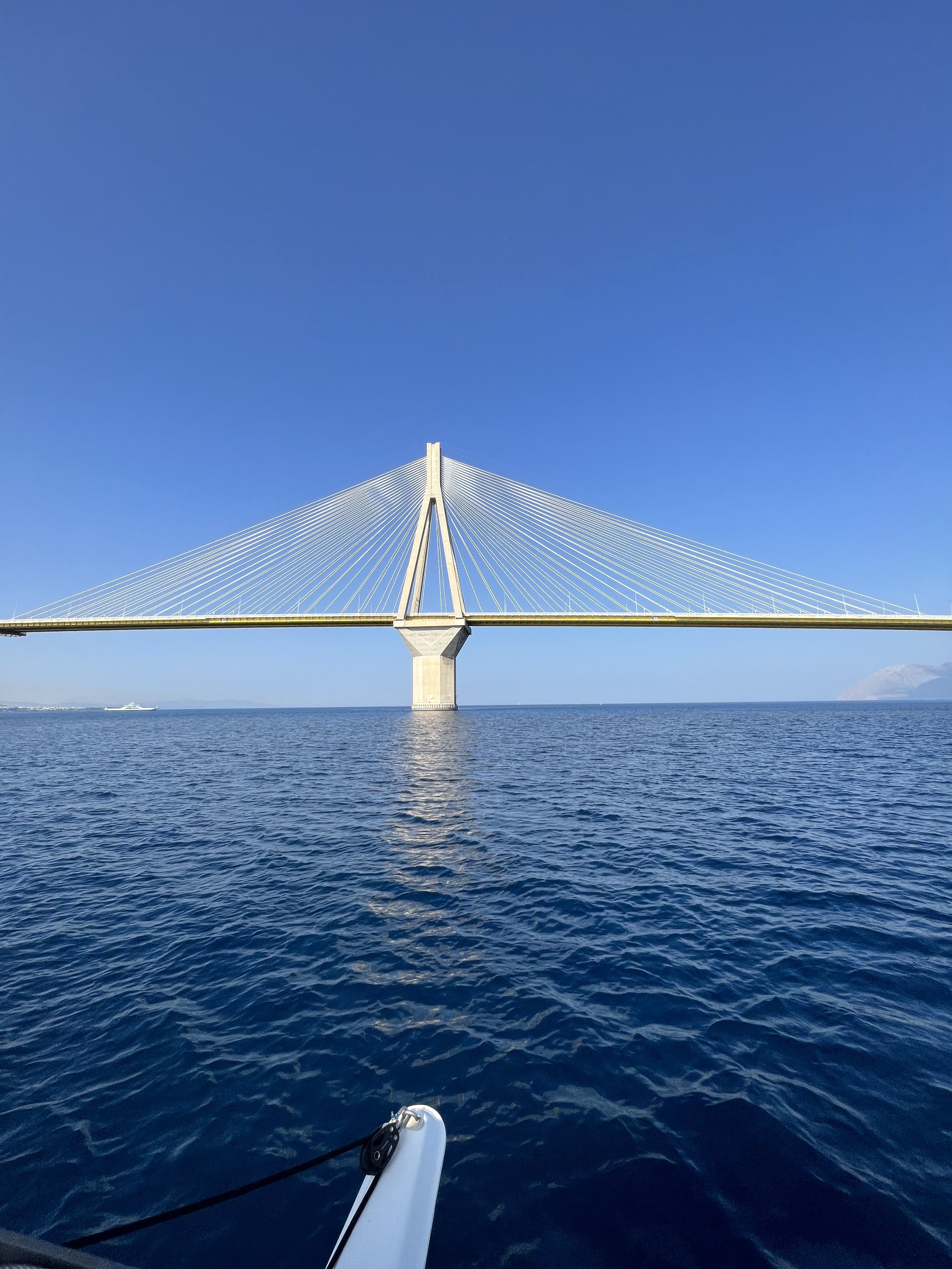Rio–Antirrio Bridge
The Rio–Antirrio Bridge is the longest cable-stayed bridge in the world at 2,380 metres long. It links the town of Rio on the Peloponnese with Antirrio on mainland Greece, and spans the distance across the Gulf of Corinth. What was once a 45min ferry ride is now a 5min drive. Originally proposed in the late 1800s, the bridge was finally realised in 2004, opening just one week before the Athens Summer Olympics. Its official name is the Charilaos Trikoupis Bridge, named after the 19th-century prime minister of Greece whose dream was finally realised 100 years later.
But this is no ordinary bridge; it is an engineering masterpiece! This bridge crosses some of the most active seismic fault lines in Europe, it sits in a natural wind tunnel, and there’s nothing solid at the bottom of the sea to build it on. To make matters worse, one coast is constantly moving away from the other. Owing to these unique conditions, advanced construction techniques were required to make the build a success.
As there is no immediate bedrock under the sea here (just sand, clay and silt), the four piers of the bridge are not buried in the seabed but rather sit on a surface of gravel that was levelled at a depth of 65m below the sea. This allows the pylons to move laterally during an earthquake, whilst the gravel bed absorbs energy. Additionally, the fully suspended car deck allows extra flexibility and reduced seismic forces, making the bridge earthquake-proof!
And as the area is also prone to very high winds, which could be catastrophic for a flexible bridge, dampers are in place that allow controlled swaying only when an earthquake strikes but not when it is windy! Not only that, the Gulf of Corinth is expanding at a rate of 30mm per year, and so there is provision for this gradual expansion over the bridge’s lifetime. Despite all of these challenges, the bridge was completed ahead of schedule and within budget.
The Rio–Antirrio Bridge is a work of architectural excellence and a marvel of engineering. Seeing it up close and from an angle most don’t get to experience was an impressive sight. Passing under the bridge also marked the end of our journey across the Gulf of Corinth and our return to the Ionian Sea.





